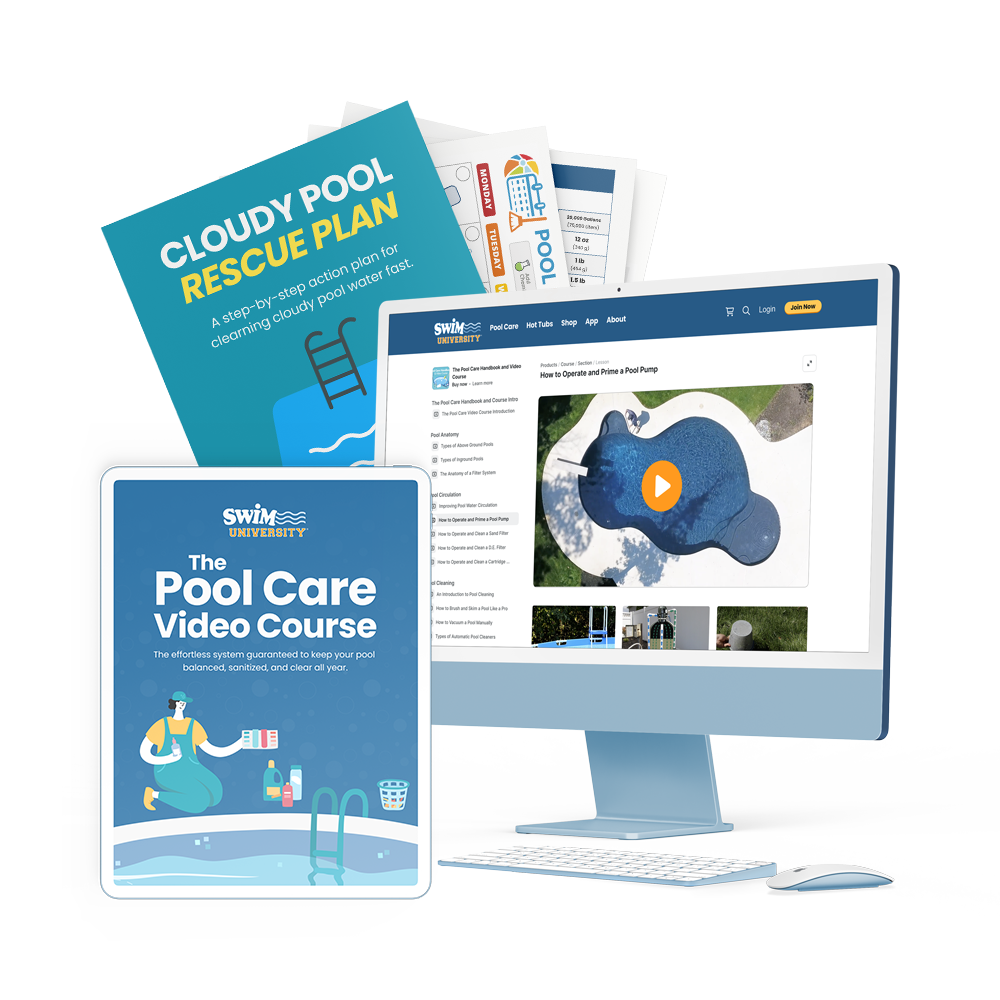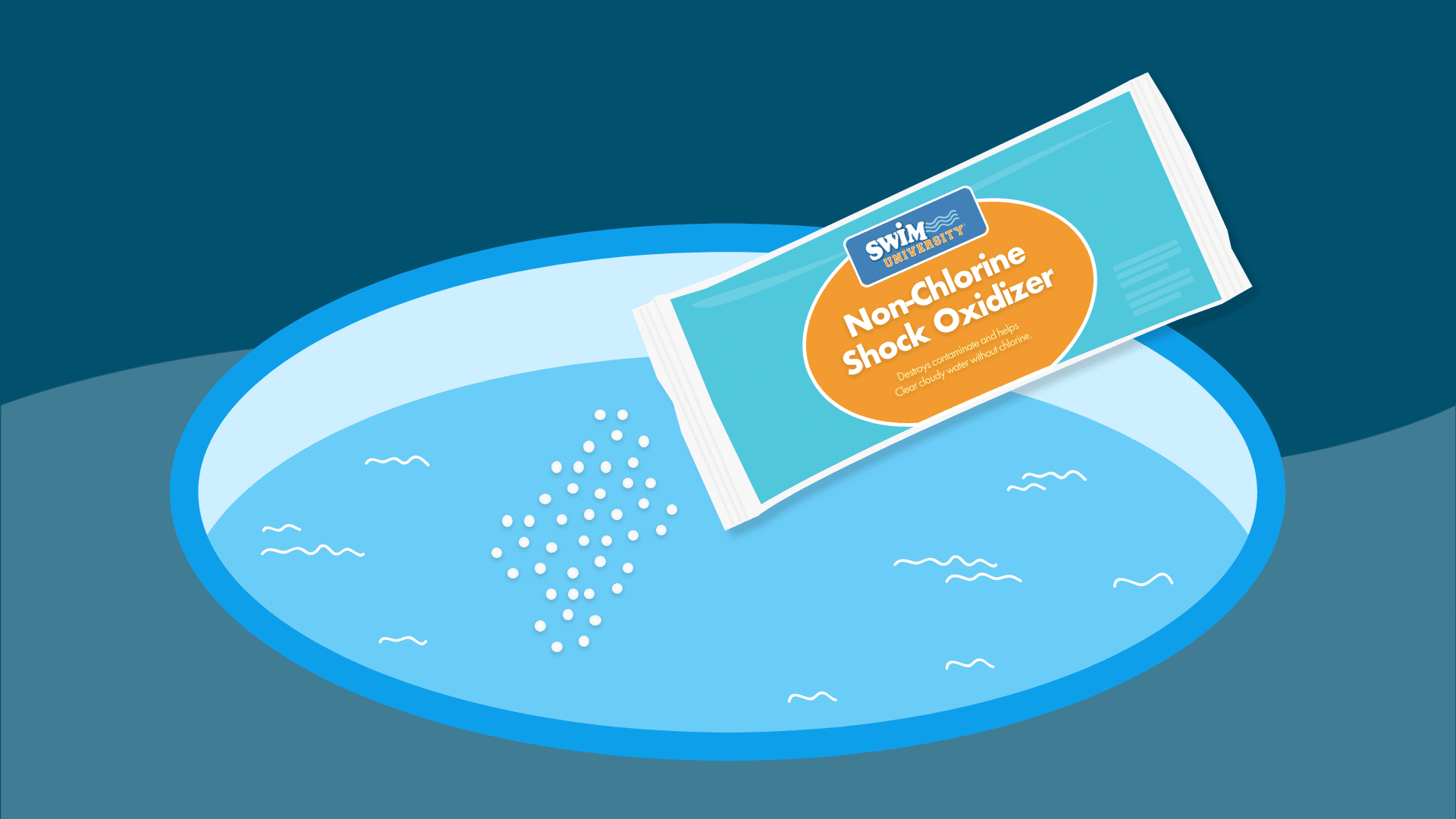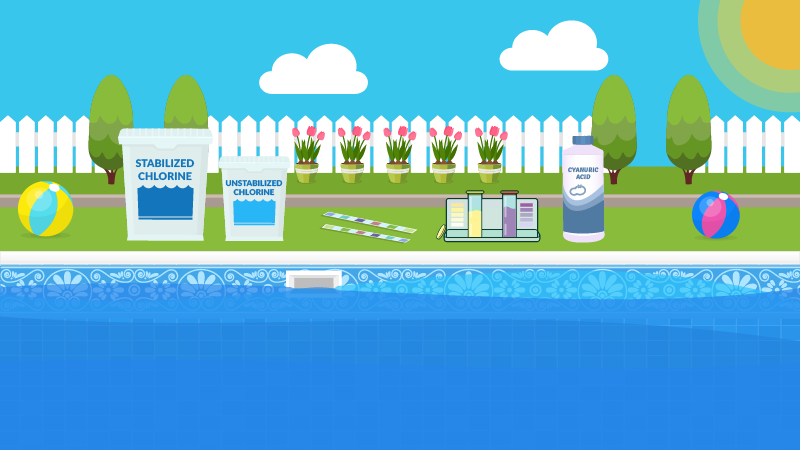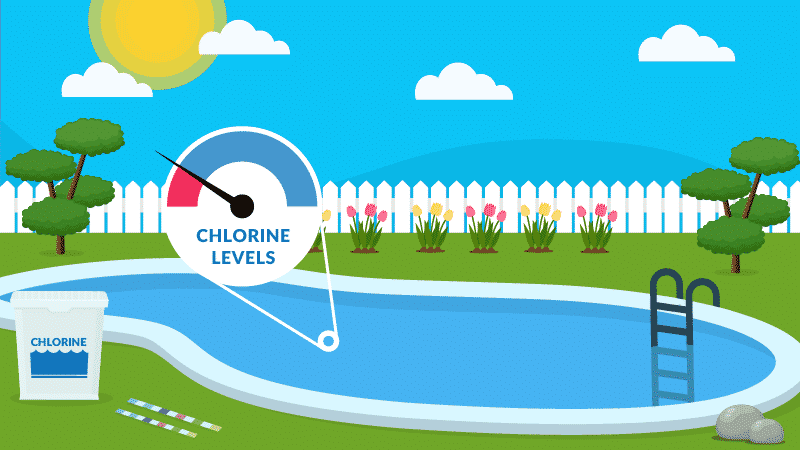How to Lower The Chlorine in Your Pool
There are a few ways to lower the chlorine levels in your pool. Whether your chlorine reading is too high or you’d just like to start using less chlorine in general, we’ll show you how to reduce your chlorine levels and usage in your swimming pool.
Stop wasting time and money with confusing water chemistry and maintenance. Our effortless system guarantees to keep your pool balanced, sanitized, and crystal clear all year. Works for all pools including saltwater.
How Do You Know If You Have Too Much Chlorine In Your Pool?
The easiest way is to test your water. Your chlorine levels should be between 1 and 3 parts per million.
When you test your water, you’re looking to see how much chlorine is active and killing contaminants. This is known as free chlorine. When that chlorine has combined with contaminants and been used up, it’s called combined chlorine, aka chloramines.
If you notice a chlorine smell in your pool, it actually doesn’t mean you have too much chlorine. The chlorine smell comes from the chloramines and it means your sanitizer is used up. You can get rid of chloramines by shocking your pool. This helps reactivate your sanitizer.
What if your eyes feel irritated when you swim?
Is that from high chlorine levels? No! It’s usually caused by improper pH levels. Your pH should be between 7.4 and 7.6. Anything lower or higher will cause burning, red eyes.
What causes high chlorine levels in the first place?
There are a few reasons this can happen.
- You may have simply added the wrong amount of chlorine to your pool. This can happen when adding shock to your water or putting in too many chlorine tablets in your skimmer.
- You may have added too much chlorine after adding a chlorine stabilizer. Chlorine stabilizer, aka cyanuric acid, slows the process of the sun burning away your chlorine.
- Your chlorine isn’t breaking down because your pool isn’t in the sun so your levels stay high.
Can you swim in a pool with high chlorine?
Short answer: you shouldn’t. Exposure to high levels of chlorine can make you sick. It can affect your lungs, skin, and eyes. It can also cause asthma. And it damages other things in the pool like accessories and more.
5 Ways To Lower The Chlorine Levels In Your Pool
If your chlorine levels are too high, there are some simple and fast ways to lower the level so you can safely swim in your pool.
1. Stop adding more chlorine.
First, if you have a saltwater chlorine generator or chlorine feeder, turn it off. And take any chlorine tablets out of the pool floater or skimmer while you wait for the levels to go down.
2. Let the sun burn off some of the chlorine.
A few hours of direct sunlight can reduce your chlorine levels by up to 90 percent. Just make sure your chlorine doesn’t drop below the recommended range of 1 to 3 parts per million.
If you use cyanuric acid to stabilize your chlorine, this might not work as well. Remember, CYA protects chlorine from being broken down by the sun.
3. Use Hydrogen Peroxide.
Pool-grade hydrogen peroxide reacts with chlorine to produce water and oxygen. Just be sure to test your pH before adding it. It works best at pH levels of 7.0 or higher.
It will also lower your pH after using it, so be sure to test and adjust your levels then too.
4. Add A Chlorine Neutralizer, like Sodium Thiosulfate (THIGH-A SULFATE).
This is one of the quickest and easiest ways to lower your chlorine levels. But it’s easy to overdo it and it will significantly lower your pH.
Start by adding smaller amounts to your pool and testing your chlorine levels as you go. And be sure to test the pH levels after you’re done. You don’t want your pool to become too acidic. You’ll also want to test your cyanuric acid levels.
This chemical removes chlorine and bromine from swimming pool water.
5. Dilute your pool water.
You can dilute your water by draining and refilling a little of your pool with fresh water. The diluted water will lower your chlorine a bit. But it will also lower the other chemical levels in your pool. So be sure to test and balance your water when you’re done.
How to Reduce Chlorine Usage In Your Pool
Finally, what if you want to start using less chlorine in your pool? Well, there are a few ways to reduce your chlorine usage.
1. Add A Mineral System.
Minerals like silver and copper can kill bacteria and help reduce your chlorine usage by up to 50%. Mineral systems only need 0.5 to 1 parts per million of chlorine.
Another advantage? They’re easy to use. An in-skimmer pool mineral system lets you place the dispenser right into the skimmer basket. These last about six months and can sanitize pools that hold up to 30,000 gallons.
A simple device you add to your skimmer basket that supplies sanitizing minerals to your pool water so you can reduce your chlorine usage. Allowing you to only use 1ppm of chlorine.
2. Switch to a Salt Water System.
You can stop buying chlorine altogether by making it yourself with salt. That’s right: saltwater pools are actually chlorine pools.
The salt added to your pool water passes through a saltwater generator built into your filter system. That salt gets converted to chlorine. Saltwater systems also automatically monitor and keep your chlorine levels at 3 parts per million.
So while technically you have a chlorine pool, you’re adding salt to your system instead. If you want to learn how to convert your pool to a saltwater system, go check out our guide.
Happy swimming!
3 Ways We Can Help With Your Pool
- Pool Care Cheat Sheets (Free): Easy-to-use downloadable guides to help you keep track of taking care of your pool this year.
- The Pool Care Handbook: An illustrated guide to DIY pool care, including water chemistry, maintenance, troubleshooting, and more.
- The Pool Care Video Course: You’ll get 30+ step-by-step videos and a downloadable guide with everything you need to know about pool maintenance.











